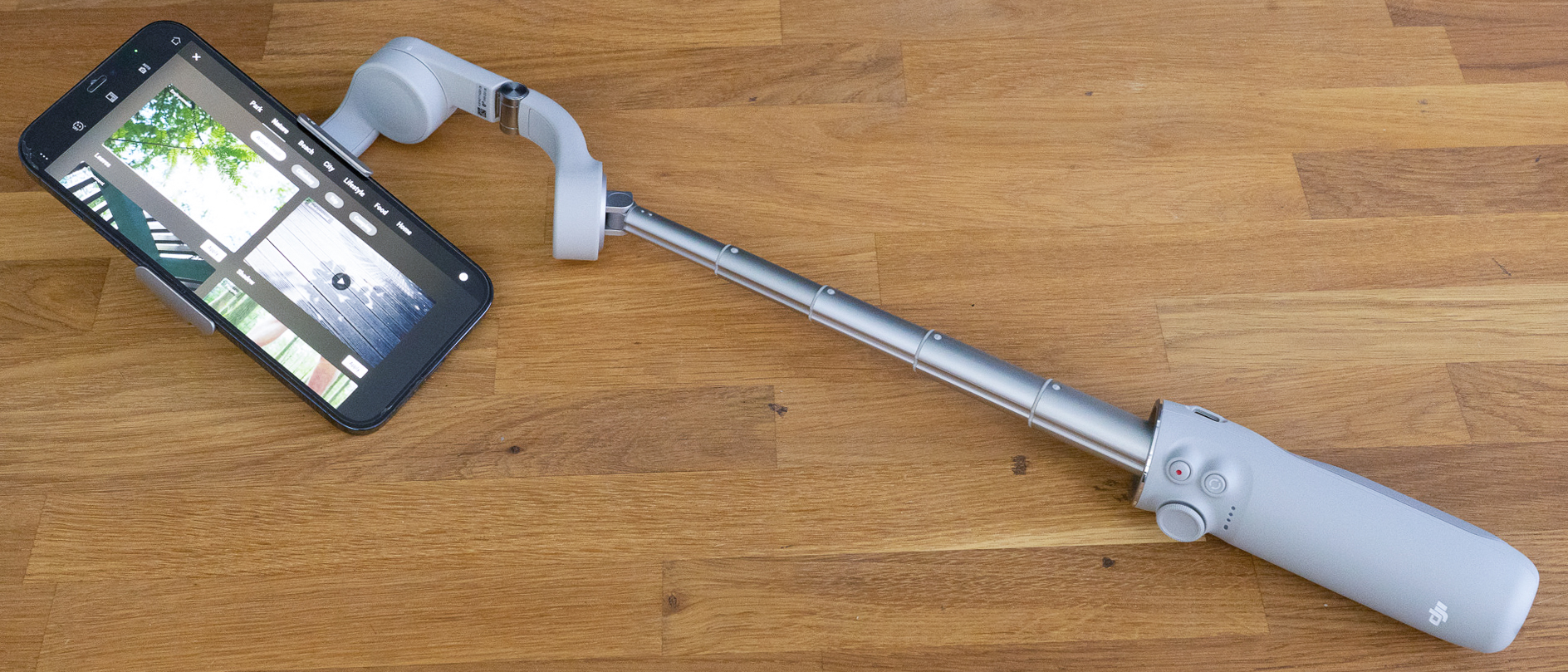Digital Camera World Verdict
The DJI OM 5 is a smartphone stabilizer – like the OM 4, and a selfie stick, all in one. That seems like a lot of weight to be resting on a few small points of pressure in terms of engineering, yet somehow it does it, and does so in a way which feels convincing. While not taking up that much more space in a bag than a selfie stick (it’s positively svelte compared to earlier OSMOs) the real success is how the OM 5’s hits the balance between quality and convenience; there are fun effects and great shots and you’d be happy to take it travelling.
Pros
- +
Magnetic clip on/off
- +
Extension-pole gives extra perspective
- +
Pouch and mini-tripod included
- +
Novices can use ShotGuides tutorial tool
- +
USB-C charging port
Cons
- -
Joystick and W/T are not analog
- -
Cannot be used to charge phone
- -
Hinge at top of selfie stick can be moved by accident.
Why you can trust Digital Camera World
The DJI OM 5 (that’s derived from “Osmo Mobile) is the latest in the series of consumer gimbal stabilizers for phones. These give creators the opportunity to use the no-doubt high end cameras in their existing device to capture the kind of content a gimbal helps with; for the most part that means smooth video but there is also there is also room for automated panoramic photos.
This represents a significant iteration in the series, with a new smaller lighter body that now sports a pull-out extension rod, or selfie stick. In comparison to its predecessor (you’ve guessed it: DJI OM 4), it slashes about a quarter from the weight, too. The sacrifice made in exchange for added portability is that the OM 5 has less than half the battery time, but we don’t imagine many users will need more than a few hours continuous use per day.
The OM5 also adds an additional mode switch (with a long press for power) which serves to make switching from photo and video easier than the OM5, while the design still features a shutter button, rotate button and trigger grip. There is a zoom switch and pan/tilt joystick, but professionals take note – these don’t react to pressure so to adjust the speed of pan or zoom you must resort to the settings.
The OM 5 has a refreshed phone grip which had no trouble with the iPhone 12 Pro Max we tested it with, whether it was in its case or not.
DJI OM 5 specifications
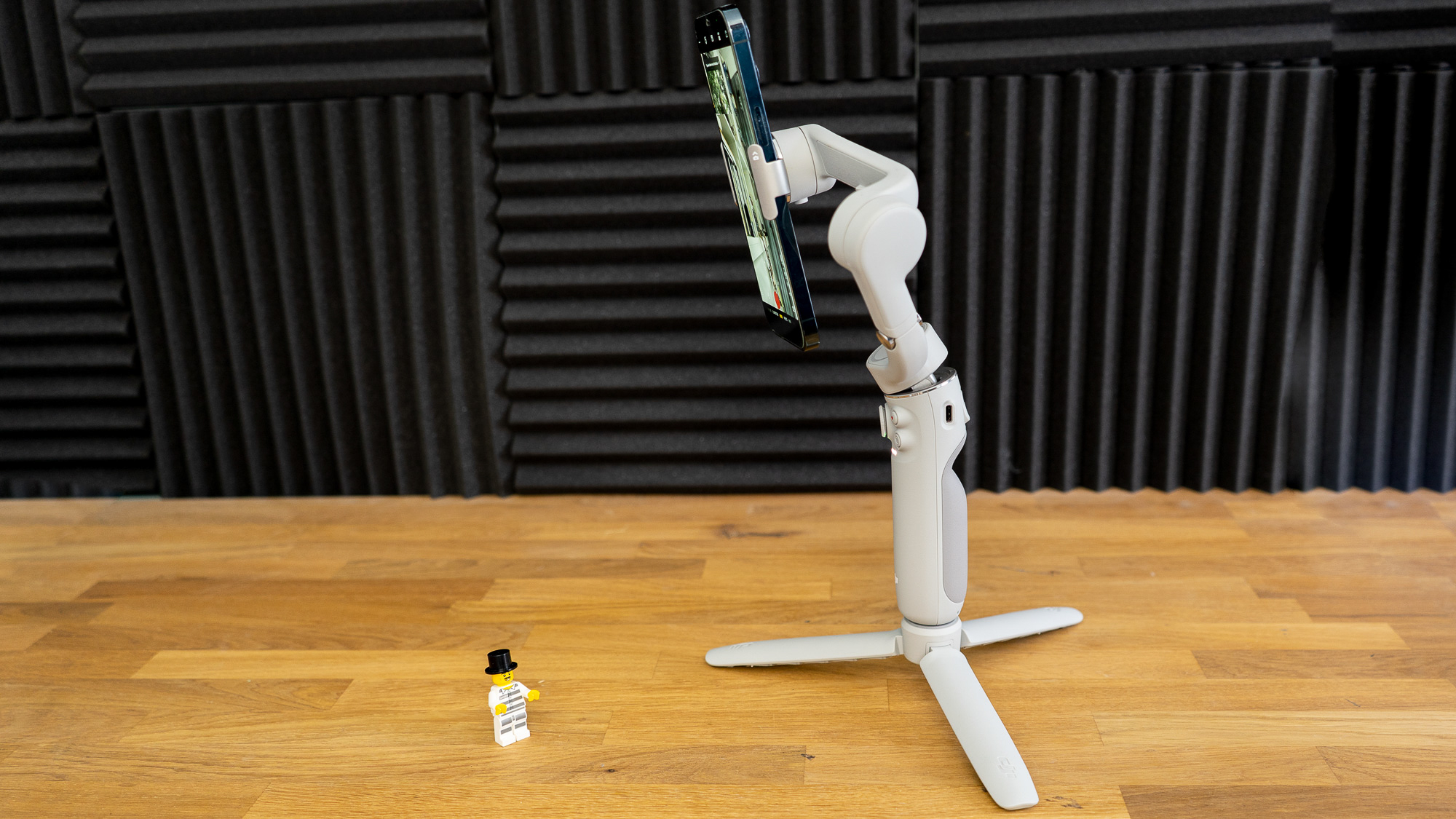
Dimensions: 174.7×74.6×37 mm (folded), 264.5×111.1×92.3 mm (unfolded)
Extension rod: 215mm
Weight: 290g
Battery life: 6.4h
Phone weight: 170-290g
Phone thickness: 6.9-10mm
Phone width: 67-84mm
DJI OM 5 Build & Handling
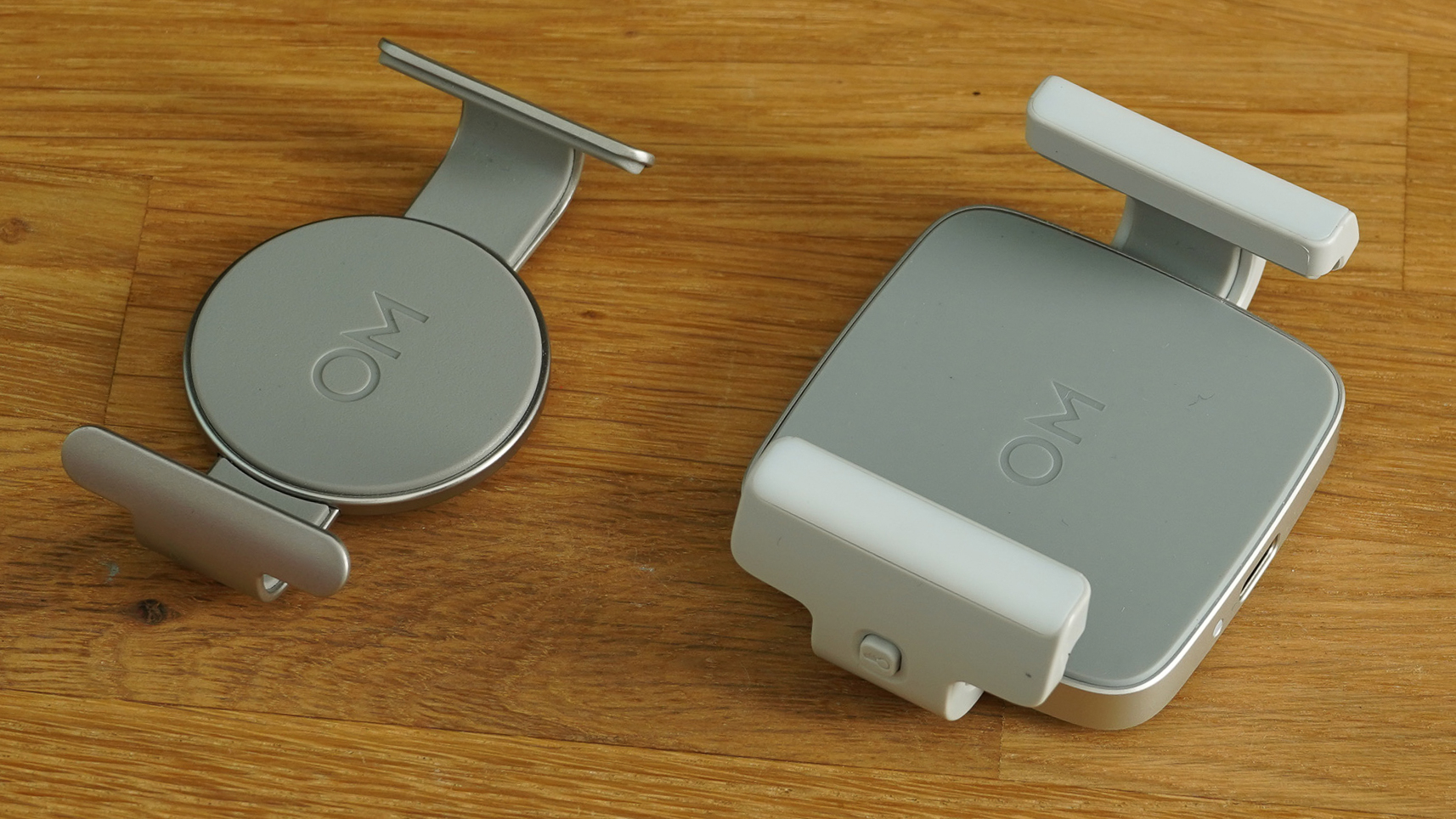
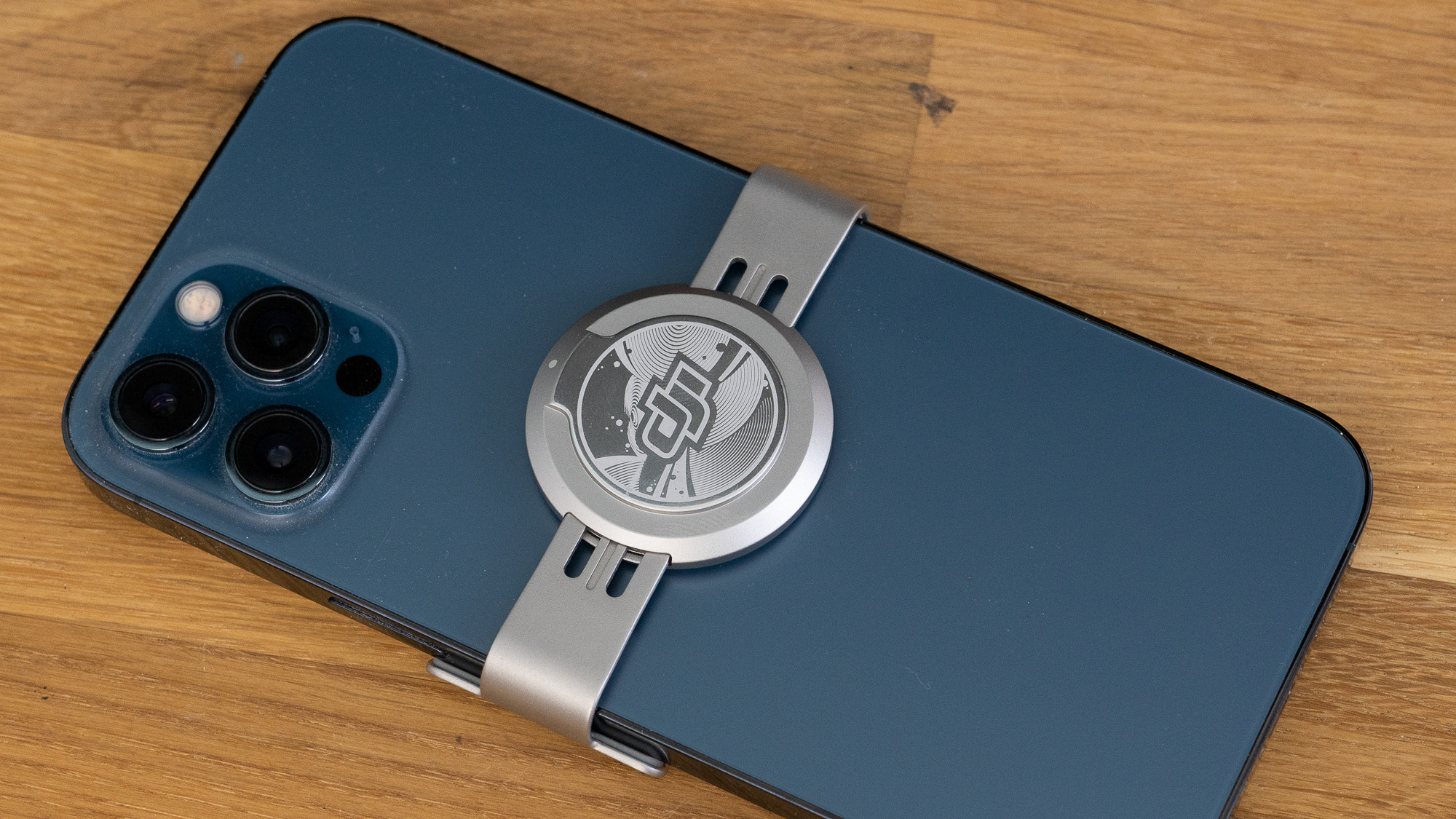
Once removed from the very promising packaging, it’s very apparent that the OM5 is made of tough stuff, especially when compared to some of the flimsy plastic wands out there. We felt this right through to the phone grip, which definitely didn’t want to let go, and it’s much appreciated that a rubberized material is used in the grip and on the phone grip (trigger side, anyway).
After a little use, however, you might find one little niggle; the hinge at the top of the extension rod can be turned. This is useful if you want to direct the camera and gimbal, but also easily done when you’re trying to open the hinge in a hurry. Later, though, when you put it back down it can be more than a little disconcerting if you don’t manually ensure it’s level with the top of the handle, the silver ring, since the motor won’t be able to turn.
In terms of operation, the build rests your right thumb over the joystick, next to the Record and Camera rotate buttons, with the trigger under the index finger. The arrangement of buttons is natural to grasp (for right-handers, at least) and several buttons offers dual functions with a double tap, the effect isn’t overwhelming in use.
DJI OM 5 Software
In order to use the gimbal, you need to install DJI Mimo, an app which allows the camera to be controlled via the OM 5’s buttons. While not always the case for products like this, DJI’s software is excellent, having no doubt benefited from some years related development while the firm was only concentrating on drones. It’s possible to switch between all camera modes, choose manual, and while some features aren’t available at every setting, you can try them. The only slight frustration is that, should you choose something not allowed at your frame rate, the system doesn’t offer to change for you.
One of the signature features of the OM5 (though one which will no doubt appear on future DJI products), is ShotGuides. We found this feature felt a little forced – it was hard to get real life to line up with the scenarios in the video tutorials. The Story Mode was better at taking the reins (albeit leaving even less control) while the CloneMe panorama effect lives over from OM4.
For those keen to improve their reality, DJI has not forgotten to include features to add a little digital makeup, though they are far from as wild as competitors.
DJI OM 5 Performance

Taking the OM5 out for a walk gave us no cause to doubt DJI’s veracity when it came to stable video, but that is one of many claims when it comes to this system. We also successfully tested the ‘Gesture Control’ to use the ‘Peace’ V symbol to initiate a record.
The ActiveTrack was effective at sticking to its subject – and could even manage though thick netting (for a while) – proving this genuinely useful in family situations where fun beat thought to the podium.
The Fill Light is also impressive given how discretely it becomes part of the OM 5 travel pack, easily thrown into a road trip bag to brighten dark places, though it does lack a batter meter unlike the OM 5 itself.
Still photos look as a good as the camera’s but the automatic stitched panoramas are impressive and worked for us even from hand-held, let alone with the tripod.
DJI OM 5 Verdict
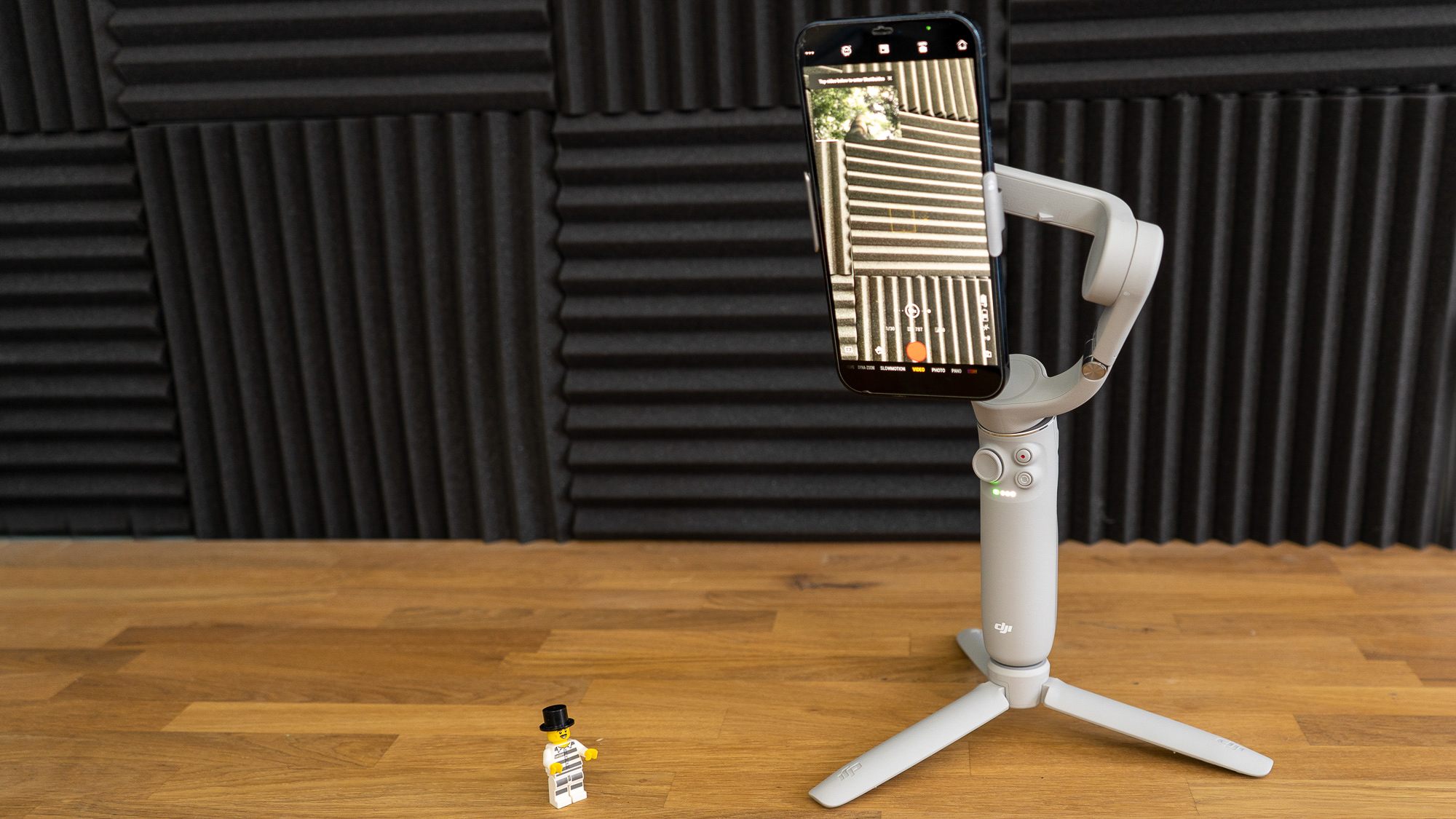
The OM 5 is a significant step toward everyday use for the OM range, shedding unneeded battery weight in favor of the selfie-stick that so photographers take advantage of. That’s not to say that there isn’t some room for improvement – we’ve long been fans of battery powered devices able to share spare juice like a power pack, but sadly that’s not an option here (there’s not really the energy). The implementation of the selfie stick, too, is reasonably sturdy, but certainly not as much as going without.
Those, really, are niggles; this is a device which does its job well, gives the creative photographer access to a good set of tools (even the twisting camera shot effect). The lack of analog controls feels somewhat restrictive to experienced professionals, but by its very nature the system cushions sharp pans. The arrival of an extra button (eliminating 5-press commands on the OM 4) goes a long way to making most shots easier, while analog would only be useful occasionally.
If you’ve been holding off until now, it’s a sensible time to pick up the latest in the OM series.
Read more
Best gimbals for iPhone, GoPro and cameras
DJI OM4 review
Best DJI drones
Best selfie sticks
Best selfie cameras

With over 20 years of expertise as a tech journalist, Adam brings a wealth of knowledge across a vast number of product categories, including timelapse cameras, home security cameras, NVR cameras, photography books, webcams, 3D printers and 3D scanners, borescopes, radar detectors… and, above all, drones.
Adam is our resident expert on all aspects of camera drones and drone photography, from buying guides on the best choices for aerial photographers of all ability levels to the latest rules and regulations on piloting drones.
He is the author of a number of books including The Complete Guide to Drones, The Smart Smart Home Handbook, 101 Tips for DSLR Video and The Drone Pilot's Handbook.

